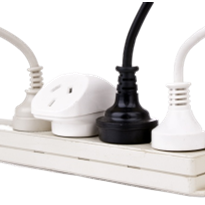Compliance Folder Management Pty Ltd (CFM) is the expert when it comes to assisting our clients with all their ongoing documentation and compliance obligations.
CFM have been assisting both local and international clients to meet compliance requirements since the turn of the century.
CFM works closely with clients to audit, store and maintain their documentation to comply with ongoing compliance and record keeping, in-line with:
- The ACMA regulatory framework for all electronic products;
- The Electrical Equipment Safety System (Electrical Regulations) and;
- ACCC recommendations
We can assist your business with new or existing products that are to be supplied onto the Australian market by:
- Reviewing test reports and associated documentation;
- Acting as an Agent for international suppliers;
- Registering products on the ACMA and ERAC databases;
- Organising any additional testing through an appropriate test laboratory;
- Apply on behalf of the client for Certificates of Conformity and Suitability from an Accredited Certifier;
- Store compliance Folders;
- Manage Compliance and technical folders by monitoring time frames and confirming with clients any changes that may need to be made to the Compliance or technical folders in order to remain up to date and/or compliant;
- Assist and/or manage product recall processes and requirements – working with the client & government agencies to minimise any potential impact;
The ACMA regulatory framework for products supplied to the Australian market includes regulatory arrangements covering:
- Telecommunications customer equipment and customer cabling
- Radiocommunications devices
- Electromagnetic compatibility (EMC) performance of electrical and electronic devices, vehicles and devices with internal combustion engines
- Electromagnetic energy (EME) from radio transmitters
Each of the four regulatory arrangements incorporates a legislative instrument, referred to as a labelling notice. The labelling notices identify the applicable technical standards and testing, record-keeping and labelling requirements for products supplied into Australia.
A supplier should consult the relevant labelling notice/s to identify the requirements that apply to each product that is being supplied in Australia. A supplier must ensure a product complies with all applicable requirements (Legislative instrument) before supplying that product to the Australian market.
Certain low-risk products (including under EMC and radiocommunications regulatory arrangements) may not require testing to demonstrate compliance. However, even if a product is not required to be tested, a supplier should be confident that the product complies with the applicable ACMA Technical Standard before signing the supplier Declaration of Conformity. This may be evidenced by a manufacturer’s performance specification documents for the device.
However, for most products, testing and test reports are required to prove that a product complies with applicable ACMA technical standards.
The specific testing requirements are based on a risk assessment of the potential consequences arising from supplying a non-compliant product. The higher the compliance/risk level, the more stringent the requirements for evidence of compliance and for record-keeping.
Each regulatory arrangement includes record-keeping requirements for product compliance.
Record-keeping requirements apply to a supplier of a product to which a compliance label has been applied.
The Electrical Equipment Safety System:
The Equipment Safety Rules outline the processes required to address the legislative requirements of the Electrical Equipment Safety System. They do this by providing a framework which defines the processes, and the roles and responsibilities of key parties.
The key elements of these Equipment Safety Rules are as follows:
- a) All in-scope electrical equipment cannot be sold unless it is electrically safe.
- b) All in-scope electrical equipment is classified into one of three levels based on risk assessment.
- c) All Responsible Suppliers of all in-scope electrical equipment offered for sale must be Australian or New Zealand legal entities (including foreign companies with an Australian or New Zealand business registration) and must be registered on the National Database as Responsible Suppliers.
- d) All level 2 (medium risk) and level 3 (high risk) electrical equipment must be registered on the National Database before it is offered for sale.
- e) Documentation and evidence appropriate to the level of risk must be prepared and kept by the Responsible Supplier.
For level 2 (medium risk) electrical equipment, a Compliance Folder is required and, if not held by the Responsible Supplier, must be made available if requested.
For level 3 (high risk) electrical equipment, a Certificate of Conformity (Approval) is required.
- f) All in-scope electrical equipment must comply with relevant standards and be electrically safe.
- g) Certifiers, being a Recognised External Certification Scheme (who have applied and been recognised by a regulator participating in the Electrical Equipment Safety System) or Regulatory Authorities who undertake a similar function, assess relevant evidence and issue Certificates of Conformity for electrical equipment.
- h) Certificates may be issued for levels 1, 2 and level 3 equipment. Requirements for the issue of a certificate include a Australian Standards or joint Australia and Standards New Zealand product Standards that applies specifically to the type, or a standard accepted by a Regulatory Authority as a standard that can be readily applied to the type.
Certificates for level 1 and 2 are issued on a voluntary basis (referred to as Certificate of Suitability) subject to meeting the same criteria as that required for level 3 equipment (referred to as Certificates of Conformity) as detailed in these Equipment Safety Rules.
All Certificates issued under the EESS must have the appropriate details registered on the National Database.
- i) All Certificates to be used as evidence of compliance must have the appropriate details recorded on the National Database.
- j) All in-scope electrical equipment must be marked with a Regulatory Compliance Mark (RCM).
- k) Responsible Suppliers must make a declaration that all in-scope electrical equipment that they supply is electrically safe.
- l) Failure by a Responsible Supplier to discharge their obligations under the EESS will result in the imposition of significant penalties and possible de-registration.
ACCC specifies:
Compliance programs help owners and managers to become more aware of the day-to-day operations of their business, therefore reducing the risk of supplying unsafe and non-compliant products.
There are a number of benefits to introducing a product safety compliance program to your business, including:
- clearly identifying the operational requirements of your business to meet the law
- reducing your risk of product failure and injury to consumers that may also result in litigation
- reducing your risk of supplying non-compliant products that can result in court action and penalties
- providing records of controls and business systems
- providing a set of procedures that improve efficiency in managing your business
- minimising repetitive complaints from consumers.
Develop a product safety compliance program
The following elements should be considered when developing a product safety compliance program.
- Responsibility. Either the business owner or a senior manager, known as the Compliance Officer, must have the responsibility to administer the program.
- Commitment. The compliance program must include a commitment to compliance and continual improvement, even if this is as simple as a series of checklists for the products you supply.
- Inspections. The Compliance Officer must complete the checklists and conduct inspections of each shipment of products received.
- Test certificates. The Compliance Officer must obtain appropriate test certificates to ensure products have been regularly tested to the claims made or the mandatory standards required.
- Staff training. Staff should be trained or at least be made aware of compliance requirements and should be encouraged to report any concerns to the Compliance Officer. New products should be shown to staff and the compliance requirements explained.
- Fix problems. Any compliance failure must be fixed before the product is supplied. Supply of non-compliant products can result in legal action against the supplier. A recall with refunds to consumers may also be required.
- Complaints. The first sign of non-compliance is often customer complaints and must not be ignored. Develop a Complaint Handling System as part of the compliance program.
- Complaint handling system (CHS). Develop a CHS that suits your business. The SA Equal Opportunity Commission provides a simple example of a complaint handling procedure(link is external). You may wish to seek professional advice. Complaints that are ineffectively handled often result in the matter being reported to government regulators.
- Records. For your compliance program to be effective and reduce your risk you must keep written records on file.
- Mandatory standards. Regulated products have mandatory requirements such as labelling and performance levels. The Compliance Officer must be aware of these mandatory standards.
References:
























-205x205.jpg)